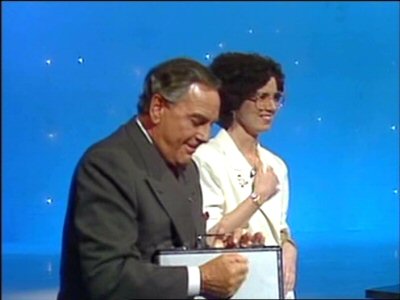The 64,000 Dollar Question
Contents |
Host
1950s version: Jerry Desmond, Robin Bailey
1990s version: Bob Monkhouse
Broadcast
ITV, 1956-58 and 1990-92
Synopsis
Double Your Money...
Gagmeister-in-chief Monkhouse hosted this tensionless but otherwise well-produced imitation of the classic American game show.
Contestants would choose a specialist subject from which their questions were drawn. The first stage of the game offered £1 for the first question, leading up to questions worth £25, £50, £100, £200 and £400 (the last two of which were two-part questions). If they reached the £400 level, their money would be safe.
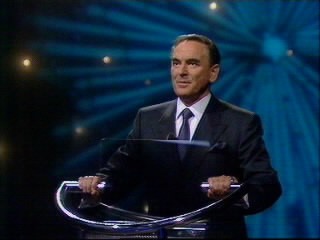 Host Bob Monkhouse.
Host Bob Monkhouse.Video Wall & Isolator
The £800 and £1,600 questions were played at the video wall. The £800 question was in three parts, the £1,600 question was in four parts (and each of the four correct answers would reveal part of a picture via the video wall). The £1,600 milestone was the next safeguard point. In order to earn the "right and obligation" to go for the £3,200 and £6,400 questions, the contestant would have to answer a "key question" which would be related to the picture revealed during the £1,600 question.
For the final two questions, the contestants were placed in a way-over-the-top isolation booth known as "The Isolator" that wouldn't have looked out of place in Encounters of the Third Kind. As the booth entered the studio from above, huge jets of dry ice rained down on to the studio, causing an awful mess to clear up, no doubt.
The £3,200 question was a five-parter, but an extra sixth part would be made available if the contestant was in trouble. The £6,400 question was a six-parter (with a seventh part in reserve), but unlike the £3,200 question, Bob would read out all six questions in a row before letting the contestant decide whether to answer them straight away, or use ten seconds of thinking time and collect their thoughts.
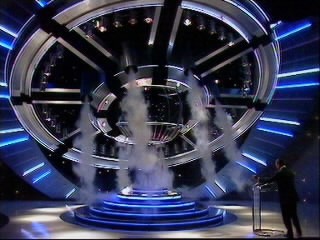 The spaceship/booth affair makes its entrance
The spaceship/booth affair makes its entranceNearly, but not quite
The disappointment of this show was two-fold. Firstly, the top prize was only £6,400, but this is not the fault of the programme makers. At the time, the top prize allowed by the ITC (Independent Television Commission) for off-peak television programmes was £5,000, and special permission had to be sought to break this. Secondly, players were guaranteed £3,200 even if they failed on the big £6,400.
The show was later relegated to a Sunday tea-time slot, but was notable for its slick approach, rather like Monkhouse himself.
Key moments
The outtake where Bob couldn't open the briefcase of money.
The man who took "Geography" as his category and failed on the £1 question which was a 50-50 choice between spring or neap tides.
Bob asking a contestant if she wishes to 'PISS' instead of 'PASS'.
Catchphrases
On asked why they didn't rename the show given that $64,000 dollars wasn't on offer, Bob Monkhouse replied "You don't fool around with successful catchphrases".
A brilliant Monkhouse segue into the commercials: "This is the show that likes to give everyone a break, and here's yours..."
Inventor
The original TV format was based on a radio show called Take It or Leave It, which had a top prize of $64.
Theme music
Composed by Ed Welch.
Trivia
The first two people to win the £6,400 prize were Brian Jones (on the operas of Gilbert and Sullivan) and Kate Veron-Parry (the works of Beatrix Potter), the first two contestants on the programme. The last person to win the top amount on the British show was Anthony Holley answering questions on The Rolling Stones.
When winning the £6,400 top prize, a specialised printer was used to print out a personalised cheque which were signed by Bob Monkhouse himself, many years before Chris Tarrant could be seen signing cheques ten times the amount on Who Wants to be a Millionaire?
On the original TV programme, the first person to win the grand prize on TV was Richard McCutchen on the subject of cooking. He had to answer the question "Name and describe five dishes and two wines from the menu of a royal banquet given in 1939 by King George VI of England for French President Albert Lebrun."
Actor Bruce Seton, who played the title role of the 1955 ITV drama Fabian of Scotland Yard, was the "Guardian of the Questions" for this version.
Bob read the questions from a neat piece of clear glass, which refracted the questions shown from a computer screen in the floor.
Pictures
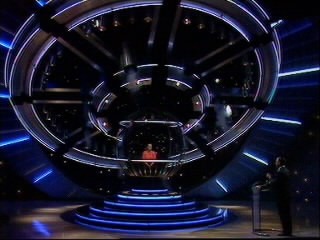 Picture 1 - The booth traps its victim.
Picture 1 - The booth traps its victim.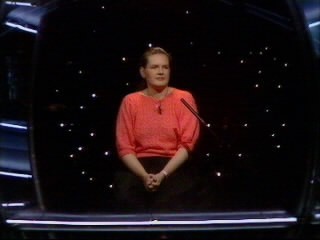 Picture 2 - A contestant awaits their $64,000 question in the isolation booth.
Picture 2 - A contestant awaits their $64,000 question in the isolation booth.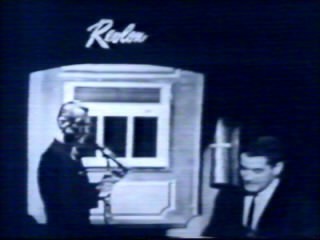 Picture 3 - How the original US version looked.
Picture 3 - How the original US version looked.
